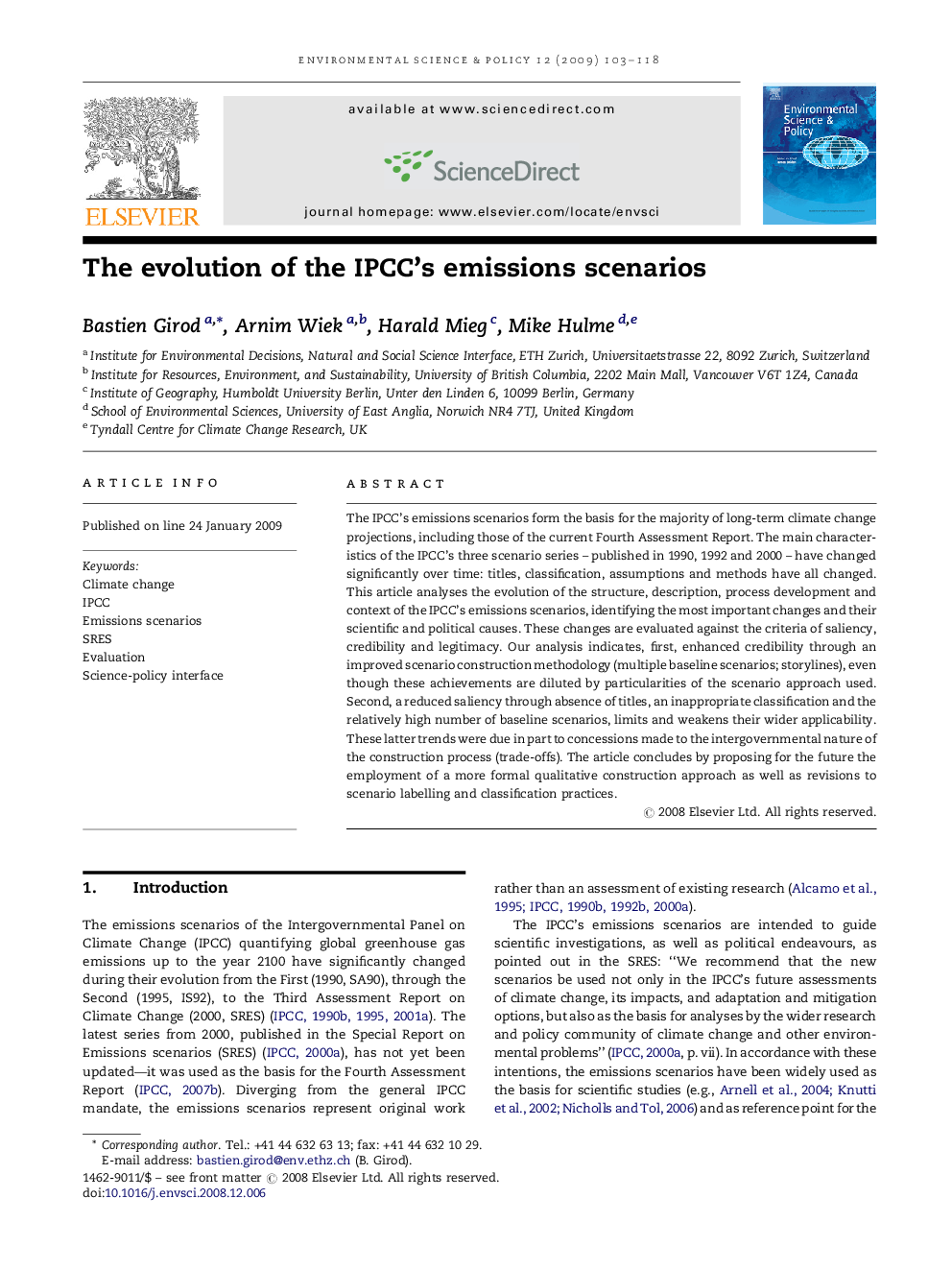| Article ID | Journal | Published Year | Pages | File Type |
|---|---|---|---|---|
| 1054211 | Environmental Science & Policy | 2009 | 16 Pages |
The IPCC's emissions scenarios form the basis for the majority of long-term climate change projections, including those of the current Fourth Assessment Report. The main characteristics of the IPCC's three scenario series – published in 1990, 1992 and 2000 – have changed significantly over time: titles, classification, assumptions and methods have all changed. This article analyses the evolution of the structure, description, process development and context of the IPCC's emissions scenarios, identifying the most important changes and their scientific and political causes. These changes are evaluated against the criteria of saliency, credibility and legitimacy. Our analysis indicates, first, enhanced credibility through an improved scenario construction methodology (multiple baseline scenarios; storylines), even though these achievements are diluted by particularities of the scenario approach used. Second, a reduced saliency through absence of titles, an inappropriate classification and the relatively high number of baseline scenarios, limits and weakens their wider applicability. These latter trends were due in part to concessions made to the intergovernmental nature of the construction process (trade-offs). The article concludes by proposing for the future the employment of a more formal qualitative construction approach as well as revisions to scenario labelling and classification practices.
